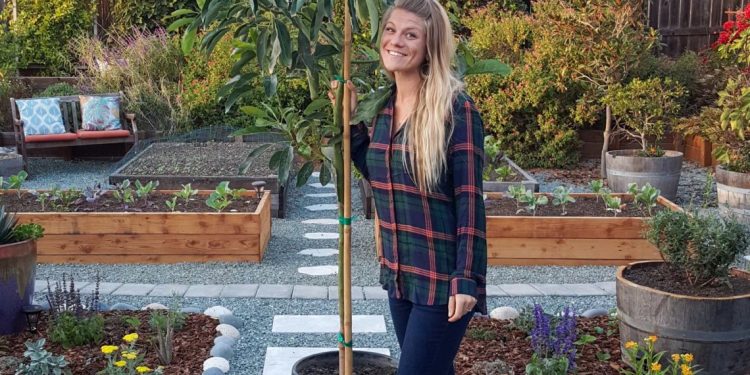Growing fruit trees together is an effective and efficient method to get more fruit from the same amount of space. Most fruit trees grow well together, given that you know how to plant a tree and properly consider the spacing, air circulation, harvest times, and size compatibility of your fruit trees. The practice of growing fruit trees together, known as companion planting, has been practiced for dozens of years.
Companion planting helps improve crop yields and get the most from fruit trees. Companion planting is an organic solution for growing fruit that does more than just stop pests from getting to fruit. Some combinations provide benefits including better soil quality, preventing weed growth, and more efficient pollination.
Here are some considerations for growing fruit trees together and some examples of which fruit trees do well.
Spacing
Fruit trees such as pears, apples, peaches, apricots, and nectarines do well with enough space. Fruit trees need space to grow root systems. They also need the space to ensure they get enough sunlight to grow. Most experts agree that fruit trees need at least eight hours of direct sunlight per day to grow big and strong.
Fruit trees come in a range of shapes and sizes, including dwarf and standard-sized fruit trees. We recommend using the same rootstock for all trees to ensure that each tree gets the appropriate amount of space. Fruit trees need less space than standard trees. Regular dwarf trees need eight-feet of space, sem-dwarf trees need 15 feet, and standard fruit trees need 25 feet. This means you’d have problems if you paired a dwarf tree with a standard tree and only gave them eight feet of space. These problems wouldn’t exist with two dwarf trees.
Harvest Time
Being mindful of harvest time is another important consideration when pairing fruit trees together. The right combination of harvesting times could see you get fruit all throughout the summer. Keep in mind that different fruit trees have unique varieties. Two different varieties of apple trees could have different harvesting periods. Most fruit trees bear fruit in either the early summer, middle of summer, or late summer.
Some varieties of peach trees are great for ensuring a long harvest. For example, Baby Crwarfod, Peregrine England, and Babcock Barley peaches go well together. For nectarines, considered Snow Queen and Panamint varieties. Snow Queens ripen in early summer while Panamint trees ripen later in the season.
For apples, Anna and Pristine variety apples produce cooking and eating apples at the start of summer. Fuji and Arkansas Black apples ripen later in the season. The apples from these trees are good for preserving for fresh fruit during the winter.
For plums, Asian plums grow well and are ready to harvest at the start of the season. They do well when planted alongside blue European plums. European plums bear fruit later in the season.

All of these cultivars are suited for USDA hardiness zones 8 to 10.
Cross-Pollination
Cross-pollination is another consideration for growing fruit trees together. Free trees considered self-fruitful or self-pollinating don’t need another tree to cross-pollinate. Some apple trees are considered self-fruitful but are more effective at setting and producing fruit when grown near another pollinating tree.
Most apricots, nectarines, peaches, and sour cherry varieties don’t need to be pollinated by another tree. On the other hand, many apples, Asian pears, sweet cherries, and blueberries require the help of another pollinating bush or tree to grow. Trees from nearby yards can get the job done, so don’t think you need to grow other trees. Bees are vital for successful plant and tree pollination. Some home growers like to plant bee-friendly plants to encourage the little creatures to pay a visit. Plant goldenrod, asters, and lupine to attract bees to your garden for successful fruit tree pollination.
Ongoing Fruit Tree Care
Please don’t forget to continue to care for your trees in the long-term. Trees take some tender loving care to grow healthy. Your fruit trees require good soil nutrition at the very least. Prune your trees across the summer and winter and implement a pest management process to keep diseases and pests at bay.
You can make your own compost or buy ready-made compost from a gardening center. It’s best to apply the compost over the summer months on trees that are two years old or older. Compost fertilizer gives healthy growing trees the nutrients they need to continue to thrive. Compost also improves overall soil quality, drainage, and structure.
Fruit trees are as susceptible to disease and pests as other trees. The good news is that most of these problems are preventable. Encourage natural predators into your garden to eat pests and keep your crops safe. Insects such as ladybird beetles, lacewings, pirate bugs, and praying mantis bugs are excellent for keeping fruit trees healthy. Consider using some straw, chipped wood, or leaf mold to create a mulch layer around trees. Mulch saves water and discourages weed growth to keep trees happy and healthy.
Final Thoughts
Most fruit trees do well when grown together. Think about the fruiting season of trees and give each tree ample room to grow, and you should have no problem getting fresh fruit all throughout the summer.






